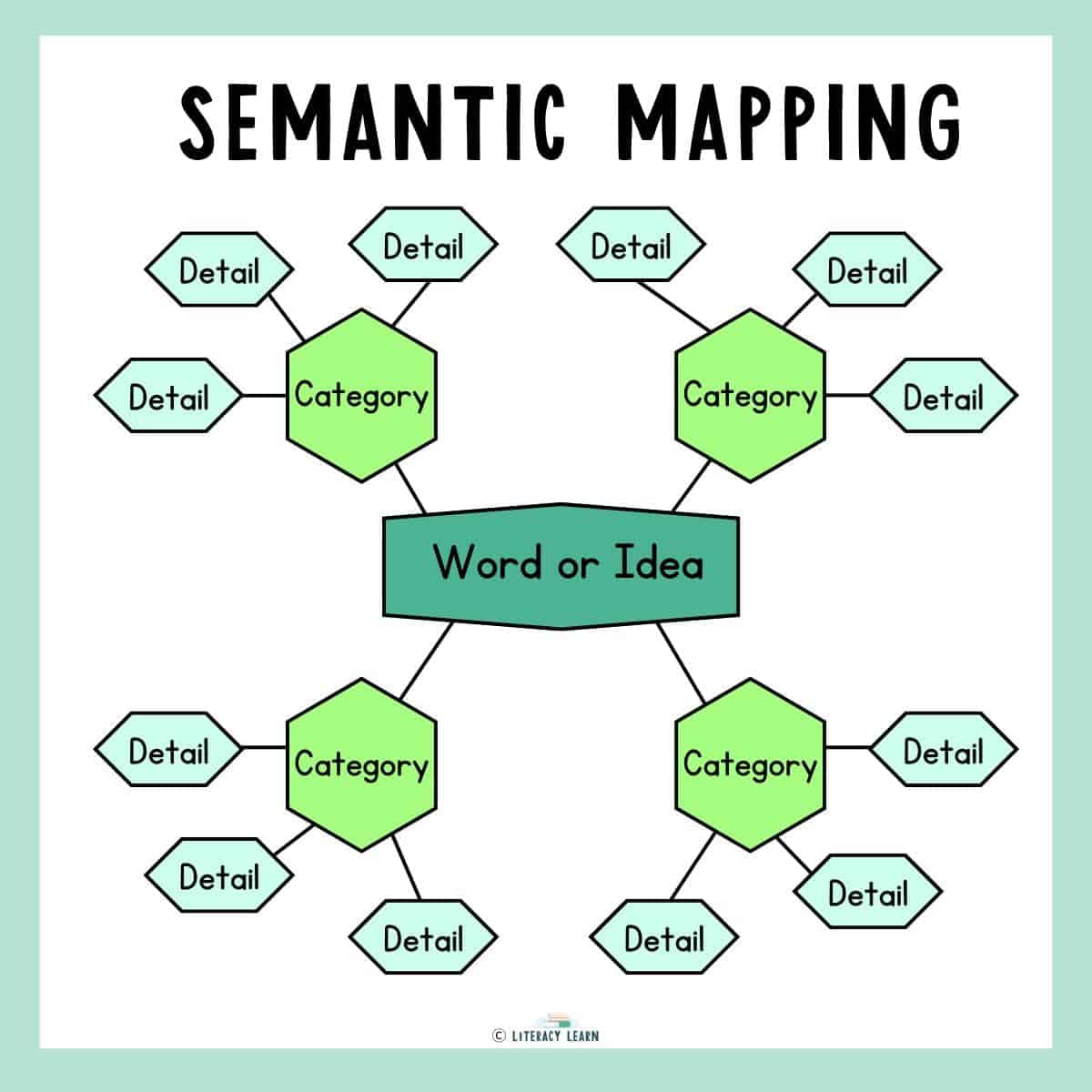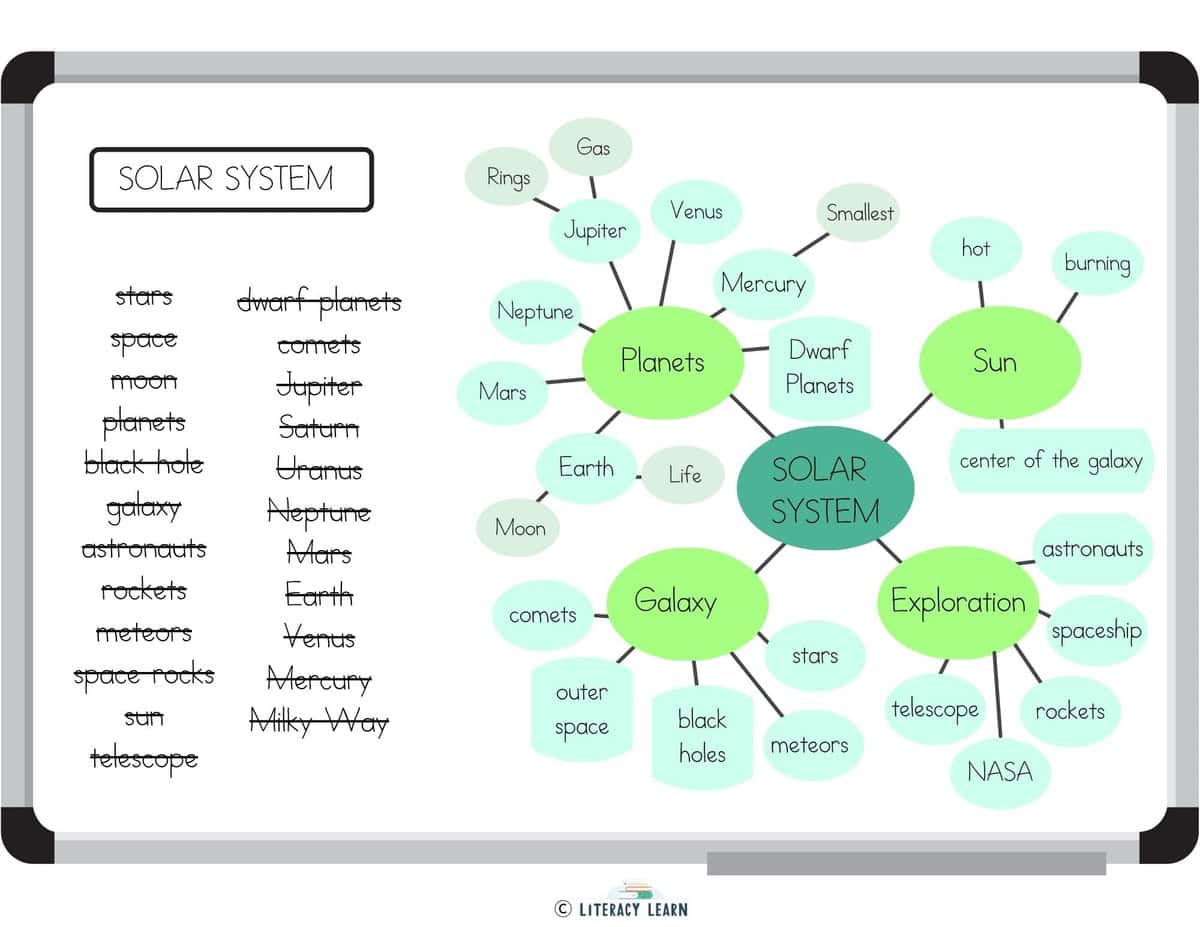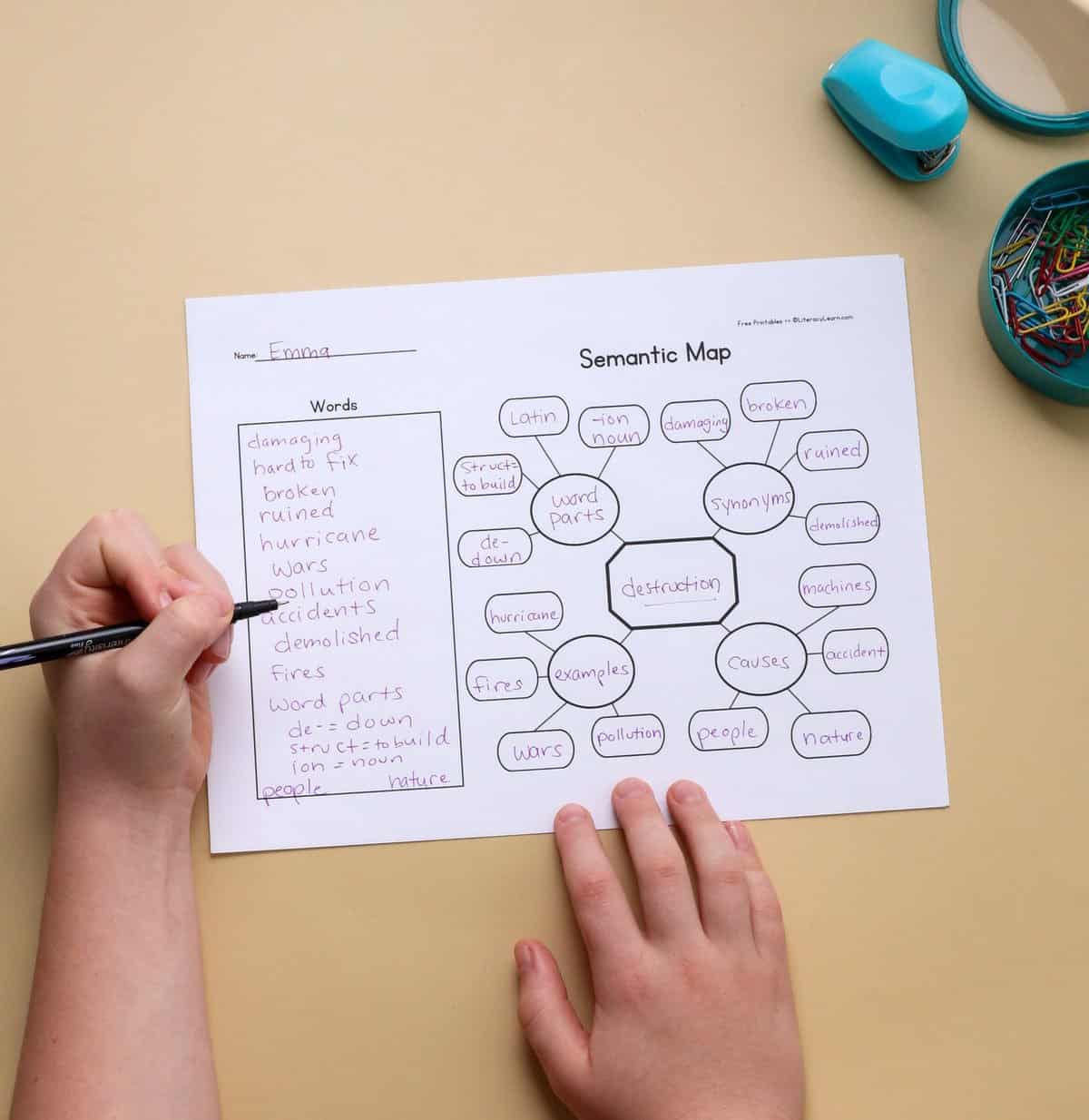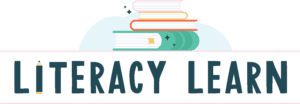Semantic Mapping to Build Vocabulary
This post may contain affiliate links. As an Amazon affiliate, we earn from qualifying purchases.
Semantic mapping is a helpful strategy for students to better understand and connect words! Learn more about what semantic mapping is, how to use it in the classroom, and get a FREE Semantic Mapping Template to make implementation easy!

What Is Semantic Mapping?
Semantic mapping is a strategy used to connect and organize words in a visual way, just like a graphic organizer.
It involves placing a word or idea in the middle and linking related words and terms around it, forming a map-like or web-like structure.
This process helps a student visually connect the ways that different words and ideas fit together, so they can understand them better.
It’s kind of like making a web of words that connect to one main idea!
3️⃣ Most semantic maps include three parts:
- An idea or word
- Broad categories
- Supporting details

Although the term ‘Semantic Mapping’ sounds quite academic, it’s easy to remember if you think of it this way: Semantics has to do with meaning and mapping is a visual representation.
➡️ Bottom Line: Semantic mapping visually displays and organizes the meaning of words or ideas.
Why It Works
The purpose of a semantic map is to show how words or ideas are connected in a clear, visual way. It helps with vocabulary development, comprehension, and critical thinking.
According to Susan Neuman (2019), “knowing a word’s meaning is not sufficient unless it is tied to a network of concepts that helps children understand their world.”
So, semantic mapping is an especially meaningful strategy because new information must be linked to existing knowledge to ‘stick!’ This is essential for building new content knowledge and learning new vocabulary.
Semantic Mapping Examples
Check out the graphic (below) of an example semantic map.

In this example, the main idea is “Solar System,” and it’s connected to four related ideas and words: planets, sun, exploration, and galaxy. Each of those four words are further connected to more words and concepts.
The result is a visual web of words and ideas that helps a student organize the concepts and expand vocabulary.

The image above shows another example of a semantic map following a slightly different methodology.
The main word or idea is “destruction,” which connects to four related sub-categories: causes, examples, synonyms, and word parts. Each of those concepts is connected to examples that fall under those sub-categories.
It helps students break down words using morphology AND helps improve comprehension and vocabulary!
Teaching Semantic Mapping to Students
To implement semantic mapping with your students, follow these steps:
- Explicitly teach them what semantic mapping is: a graphic organizer.
- Explain why it’s important: to learn new words/ideas by connecting them to existing words/ideas.
- Teach a general procedure to complete it (see below).
Remember to explicitly teach, model, and practice the strategy together.
Procedure
- Pick a Word: Choose a word or idea you want to explore from a connected text.
- Write the Word: Write the chosen word in the center of the map.
- Brainstorm: Think of related ideas, concepts, or other words that explain the main word. Use context clues from the connected text to help you. List all the words on one side of the map.
- Categorize: Look at all the words and organize them in categories. For each category, try add more information, like examples, details, or even pictures, to make the meaning clearer. Use a dictionary and thesaurus for help.
- Update the Map: After reading the connected text again, check your map. Add new details, rearrange, or fix anything that needs updating.
- Share the Map: Share and discuss using collaborative conversations.
👨🏽🏫 Teaching Tip: Semantic mapping is a collaborative activity, so students should never simply copy a teacher-created semantic map. D. Hyerle (1996) found that the power of the strategy is found in the students’ ability to “negotiate meaning” (p. 32).
This means that students need the freedom to create, build, and add to their own maps.
Using the Template
Download our free printable semantic mapping template below! There are a lot of reasons it would be beneficial with your students:
- The activity provides lots of opportunities for rich discussion.
- It’s versatile; it can be used to teach concepts/ideas OR words, building content knowledge and vocabulary.
- It’s an especially effective whole group activity. Once students understand and have practiced the the procedure, they can use it in groups, with partners, or on their own.
- It’s another essential component to vocabulary instruction, just like morphology!
- It gives kids a voice as they learn and grow together. Their map may be different from the one the teacher envisions, and that’s perfectly okay. It’s actually encouraged!
- It’s a strategy that is proven to be effective with struggling readers and those with reading disabilities.
- It can be easy to integrate technology to create your map! A favorite online tool is bubbl.
🤩 Looking for more great ways to teach vocabulary? Check out our recommendation for the best vocabulary-building books, and then grab our free and customizable word matrix and alphaboxes graphic organizer.
Research References:
- Hyerle, D. (1996). Visual Tools for Constructing Knowledge. Alexandria, VA: Association of Supervision & Curriculum Development.
- Neuman, S. B. (2019). Comprehension in Disguise: The Role of Knowledge in Children’s Learning. Perspectives on Language and Literacy, 45(4), 12-16. Read the full article.
🖨 Download & Print
DOWNLOAD TERMS: All of our resources and printables are designed for personal use only in homes and classrooms. Each teacher must download his or her own copy. You may not: Save our files to a shared drive, reproduce our resources on the web, or make photocopies for anyone besides your own students. To share with others, please use the social share links provided or distribute the link to the blog post so others can download their own copies. Your support in this allows us to keep making free resources for everyone! Please see our Creative Credits page for information about the licensed clipart we use. If you have any questions or concerns regarding our terms, please email us. Thank you!
⭐️ MORE Freebies: Printable Word Matrix, Alphaboxes Graphic Organizer.
Drop a comment below to tell us how you’re using Semantic Mapping in your classroom!

